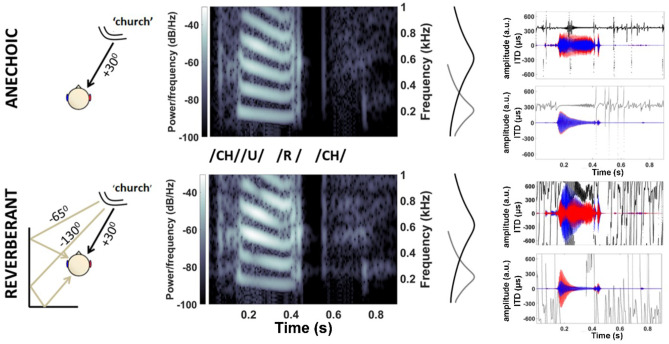Fig. 1.
Reverberation confounds the binaural cues of speech stimuli. Top: anechoic speech (direct sound, without reverberation): ‘church’ spoken at 70 dB SPL by a female talker located +30° to the right and front of a virtual listener; speech spectrogram below 1 kHz at left ear. Right: gammatone filters centred at 200 Hz (light grey) and 600 Hz (dark grey) illustrate cochlear-filtered anechoic vs. reverberant speech waveforms in the left (blue) and right (red) ears; instantaneous ITDs (light/dark grey) (restricted to ±700 μs, human physiological range) were consistently near +363 μs. Bottom: reverberant speech: direct sound plus two simulated reflections from listener’s left, respectively from −65° delayed by 4 ms, and −130° delayed by 8 ms, increasing the energy at the left ear (brighter spectrogram above 400 Hz). Reverberant energy extends into the quiet pause between the vowel and final consonant (0.45–0.55 ms), generating conflicting ILD cues (600-Hz channel) and rapidly varying ITDs

